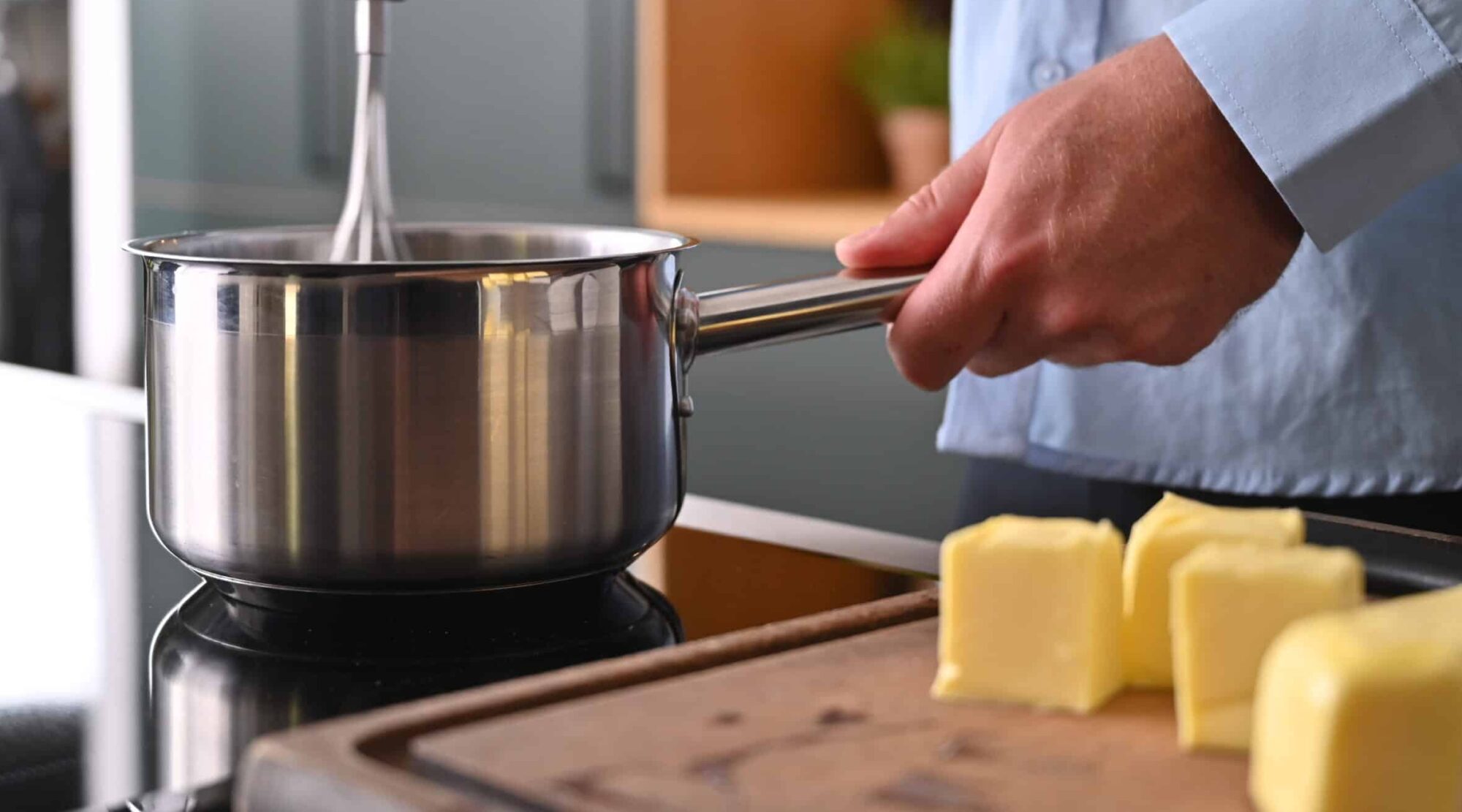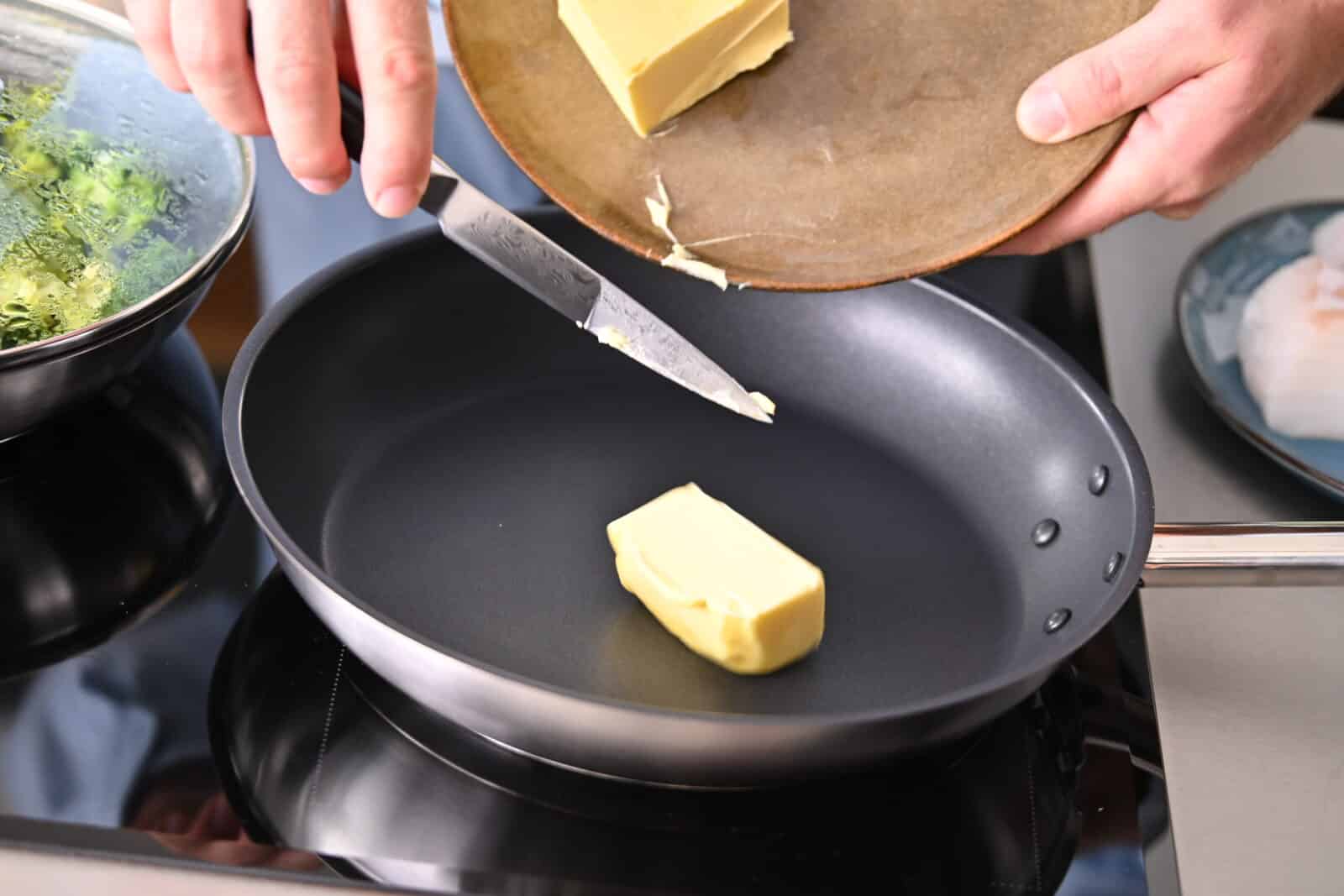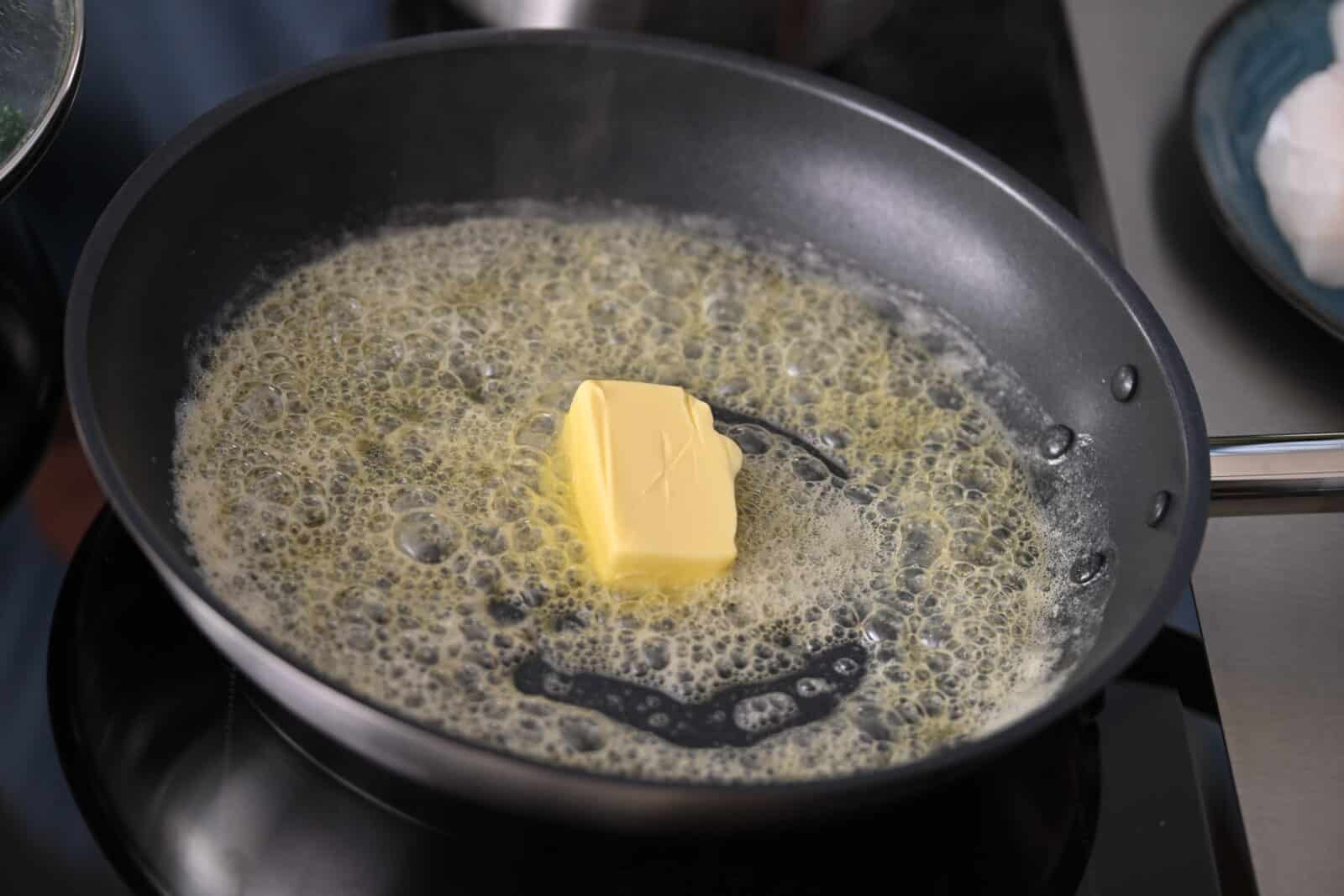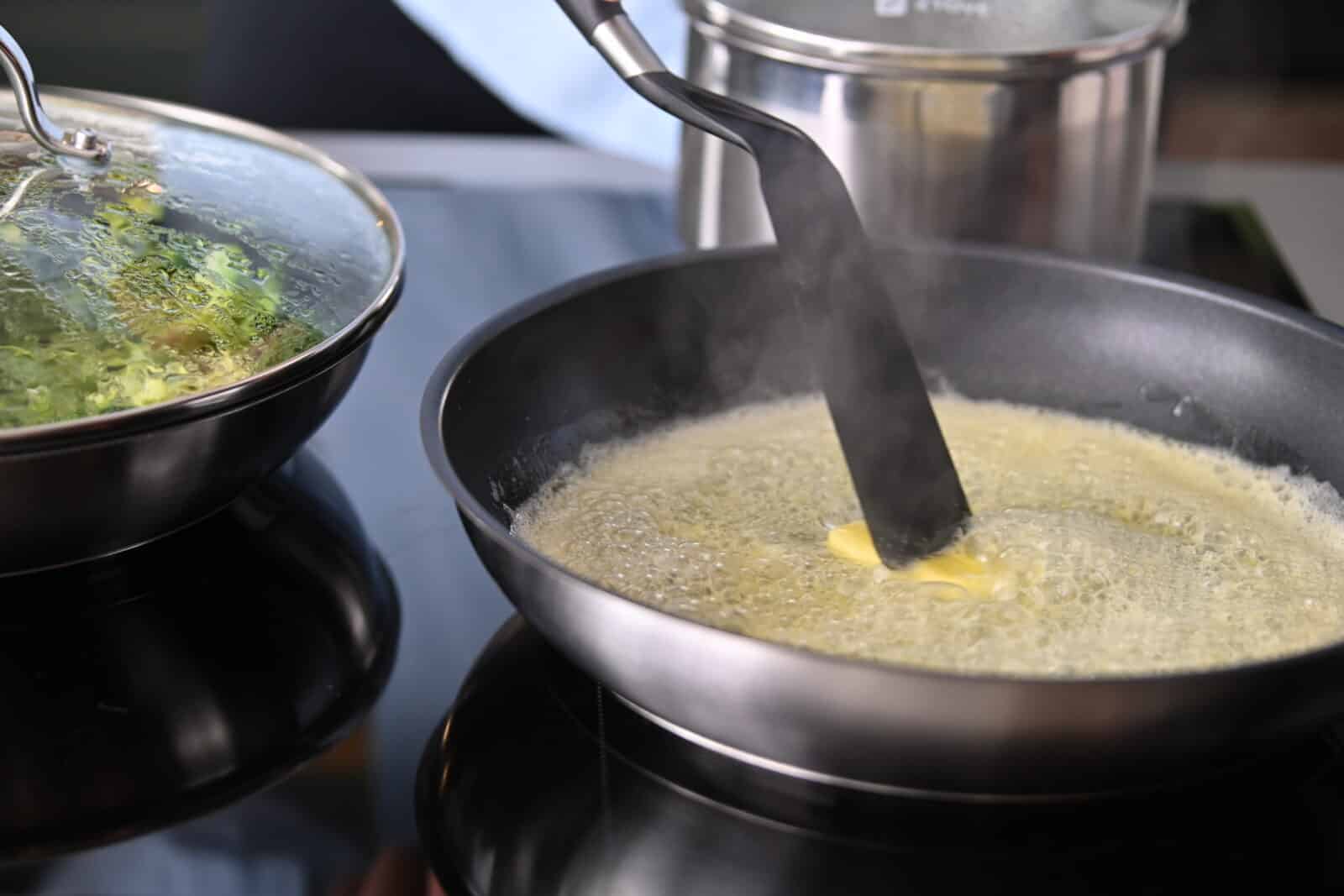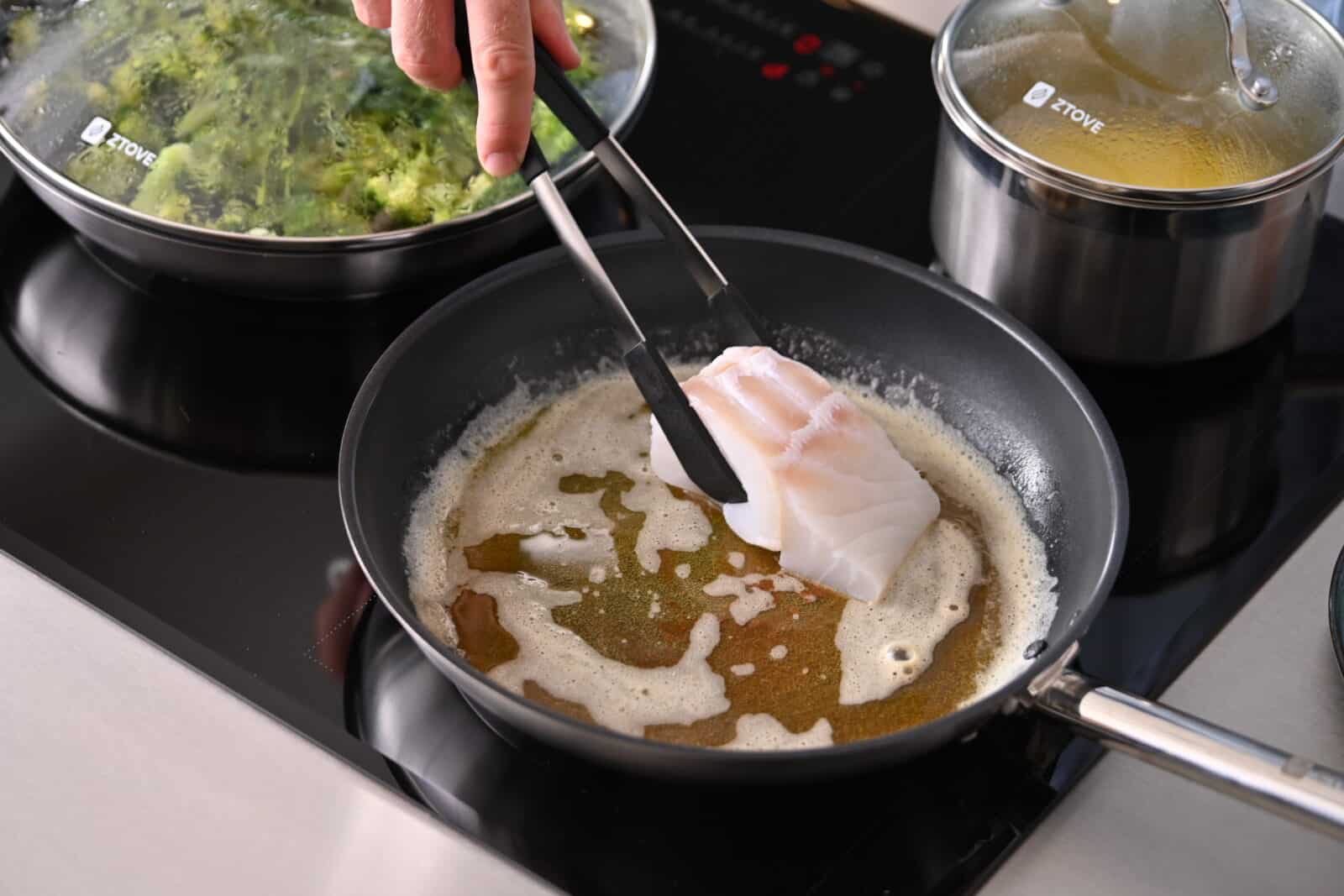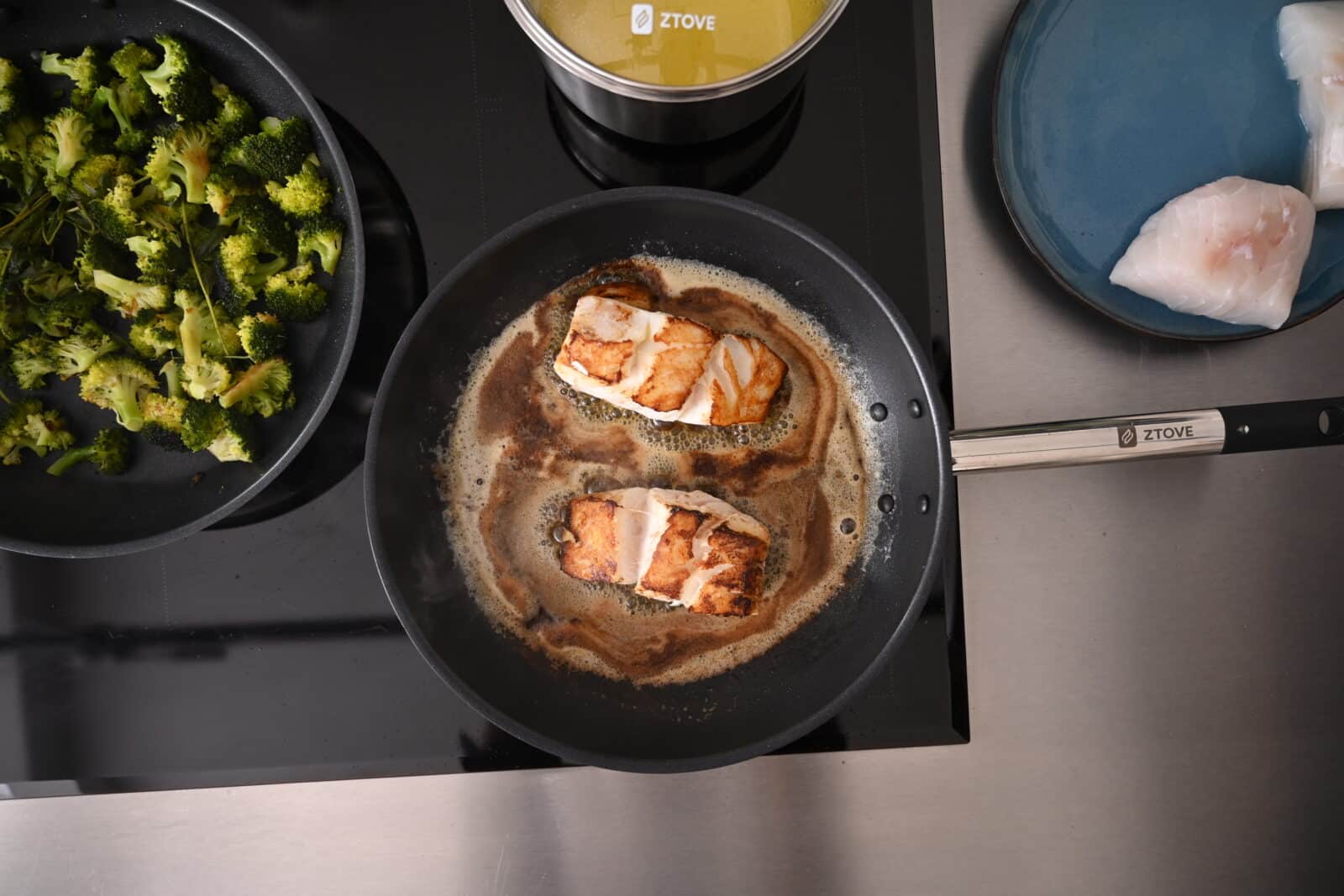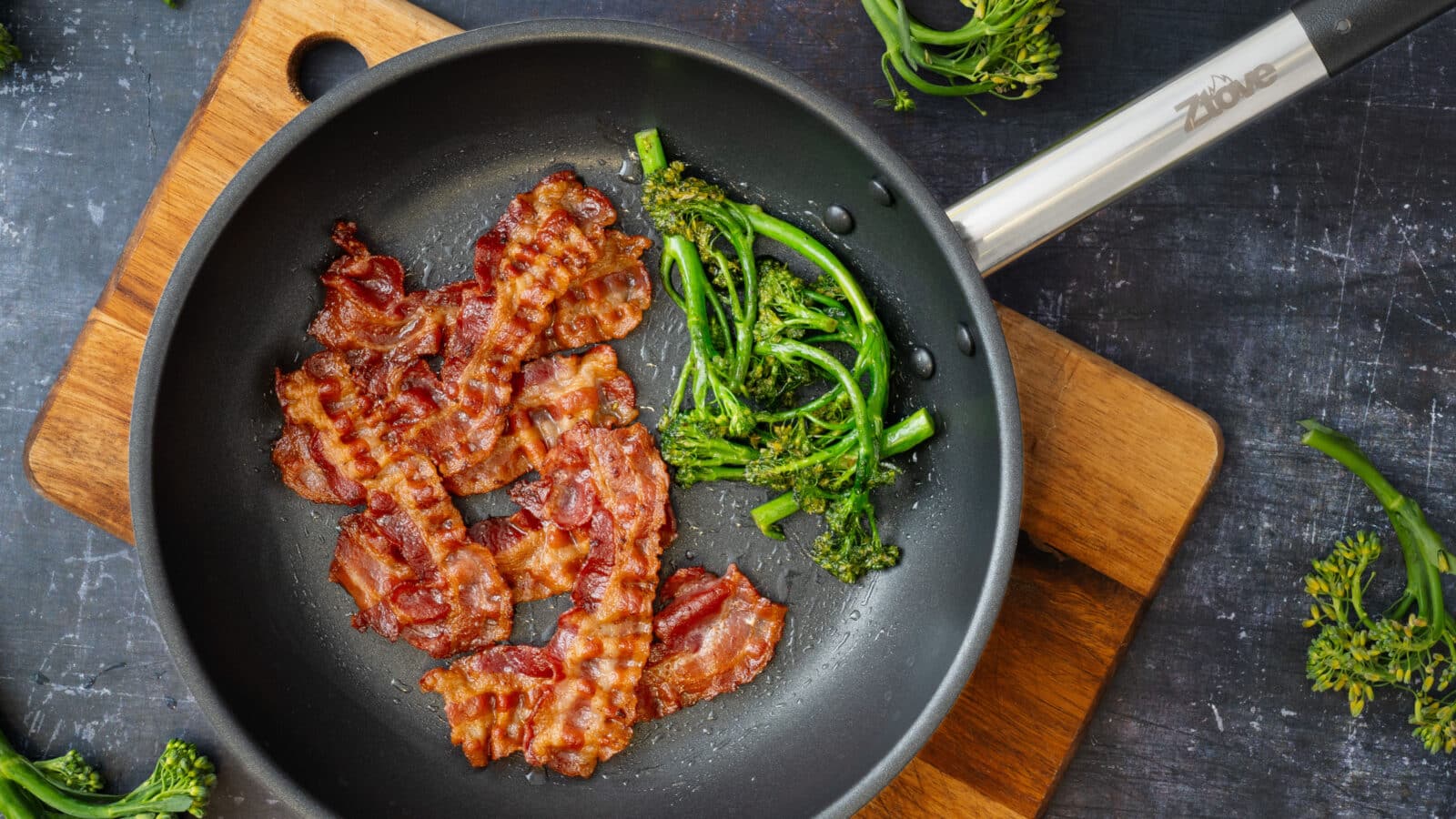Butter with temperature control
If you don’t have Ztove and thus the ability to precisely control the temperature, this blog post can still give you insights into how butter reacts when cooking at high versus low temperatures on your stove.
What is butter made of?
Butter is made by churning heavy cream. The aim is to separate the fat, so you end up with buttermilk and butter. The butter is then rinsed with water to remove the remaining buttermilk before salt is added.
The composition of butter can vary according to the type of butter. In general butter consists of a minimum of 80% fat and has a maximum water content of 16%, the remaining butter consists of protein, lactose (milk sugar) and salt.
Butter is versatile and can be used for many things – especially if you know the temperature at the bottom of your pans and pots.
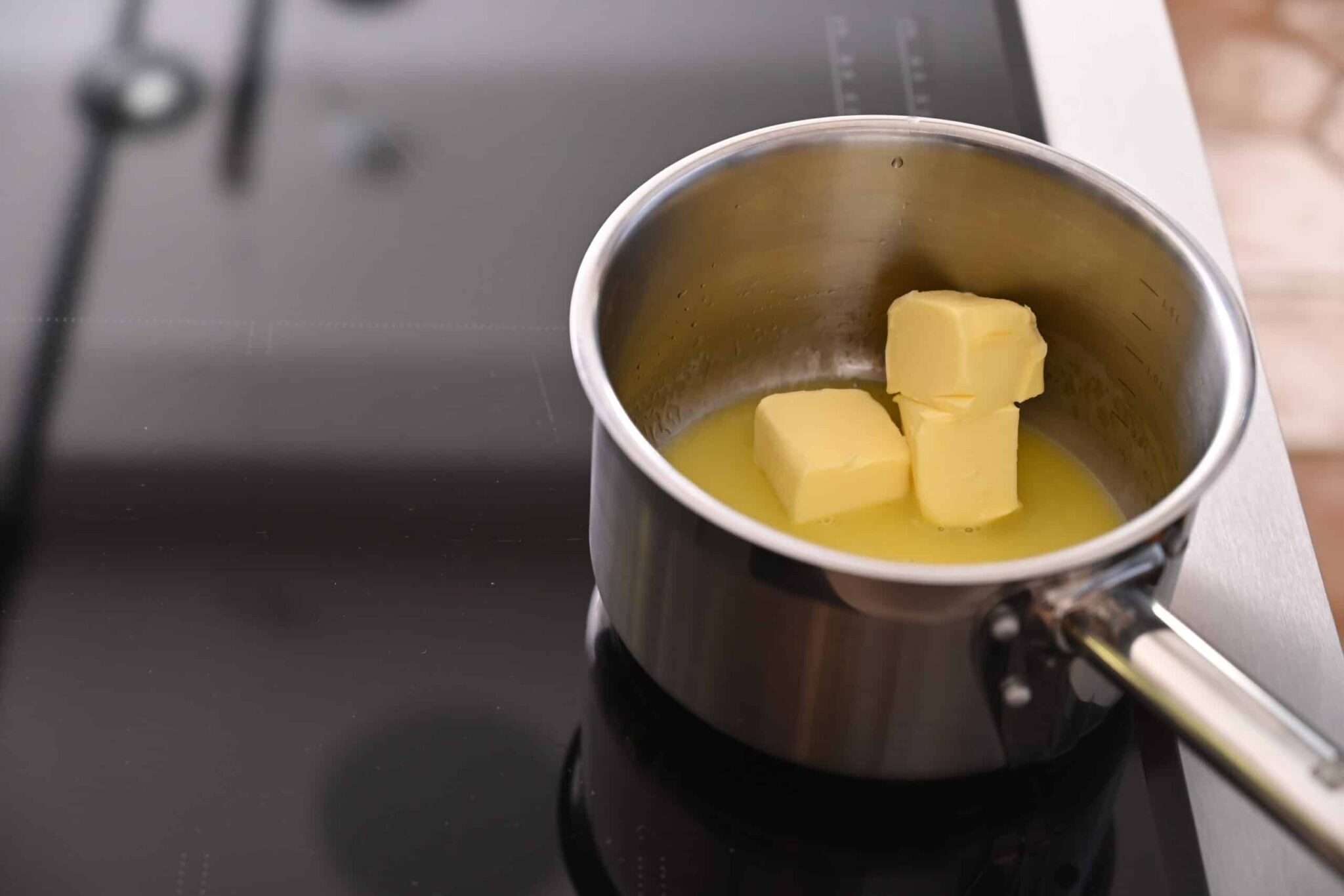
Low heat
50 °C is a good temperature for melting butter. When you melt butter at 50 ºC, the milk proteins don’t take on colour. If you need melted butter to use in cakes etc., this is also the temperature to use.
58 °C is the perfect temperature to prepare butter and egg based sauces such as hollandaise and bearnaise. The butter melts easily, but the temperature is so low that you don’t risk scrambling the eggs. You can prepare the sauce nice and easy and it works every time.
75 °C is the temperature for assembling a pan-sauce with butter and for making a quick beurre monté. Add a little stock or other liquid to the pan/pot and then add cubes of butter while stirring. You’ll have a great classic sauce in 5 minutes.
95 °C is a good temperature to use for making clarified butter. At this temperature the butter will melt quickly, but the water won’t boil. This prevents the water from mixing with the fat. The whey will sink to the bottom of the pot, making it easy to separate the fat from the whey. Clarified butter can be used to make sauces like hollandaise or bearnaise.
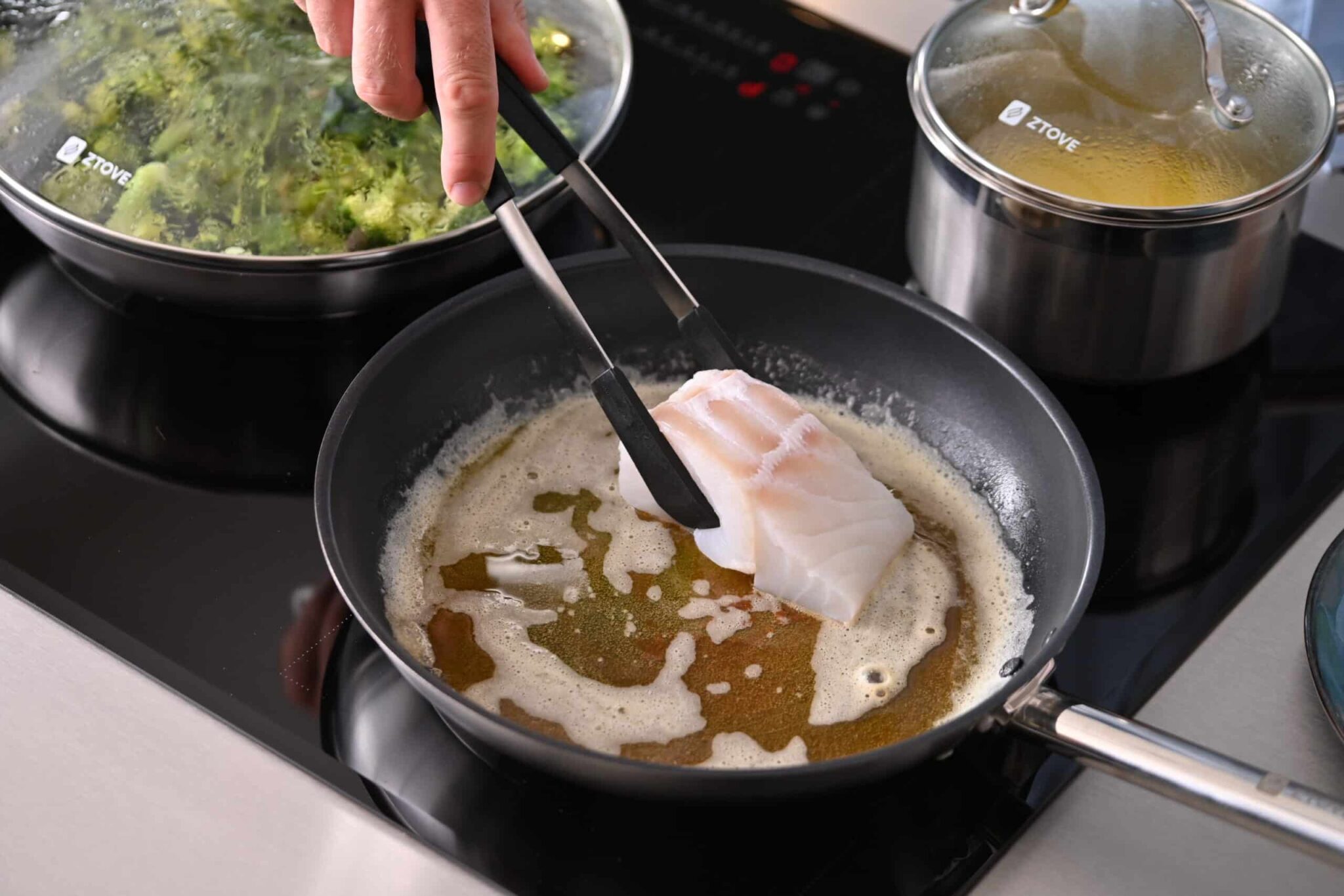
Medium high heat
150 °C is a good temperature to quickly remove all water from the butter, before using the butter for frying. Butter consists of around 16% water, and if you want to fry in butter, it’s better to remove the water beforehand, as the water keeps the temperature down until evaporated. When the butter is cooked at high temperatures the water will make the butter splash onto your hob and make a mess, therefore it’s a good idea to remove the water before increasing the temperature.
160 – 175 °C is a good range for making ghee. Ghee is browned butter that is great for frying. Cook the butter for 5-6 minutes. When all the water has evaporated and the butter has browned then, strain off the fat. This gives you a type of clarified butter with a golden nutty flavour and aroma that you know from frying in butter. One of the benefits of ghee is that it doesn’t burn as easily as regular butter and can therefore be used at higher temperatures.
170 °C is the temperature at which you can fry in regular butter for about 10 minutes without burning the butter. The rule of thumb is that for each 10 °C temperature increase, you can cook for half as long and for each 10 °C decrease, you can cook for twice as long.In other words, if you cook at 170 ºC you can cook for 10 minutes and at 160 ºC you can cook for 20 minutes before the butter starts to burn.
170 – 180 °C are particularly interesting temperatures, as many portion-sized pieces of meat and fish will be done in 5-10 minutes. Therefore, you can fry them in butter. You may want to set the “default” temperature of your pan to 170-180 ºC in the app, as this is the range for what is normally considered “frying temperature”, and most food can be fried nicely at this temperature.
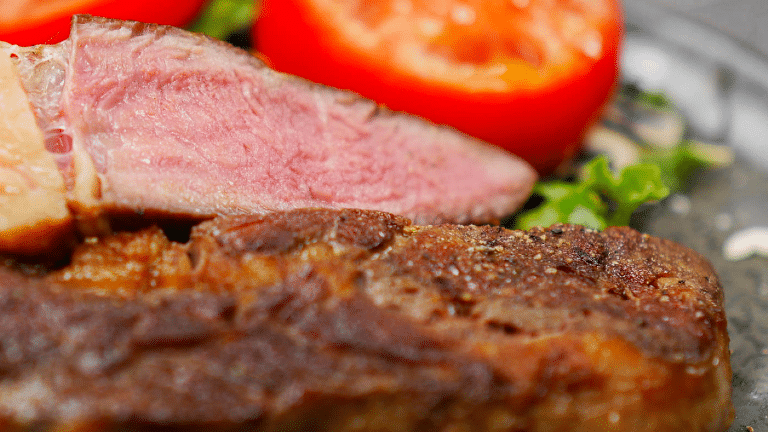
High heat
190 °C is a high temperature for butter. Theoretically, you can’t cook much more than a few minutes at this temperature before the butter starts to burn. However, it’s still a good temperature for some things, for example breaded fish or other breaded items. This is because breading primarily consists of flour, which needs a relatively high temperature before it browns. It’s a good idea to remove all butter between each batch of fish, and wipe the pan off with paper towels to remove any browned residue.
200 °C + is a very high temperature for butter. If you need to brown something hard, 200°C is a fine temperature. But you need to start with oil and first add butter for the last minute or two. Like when you’re frying a steak, otherwise the butter will burn.





